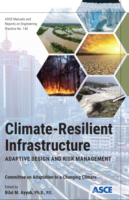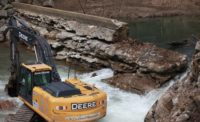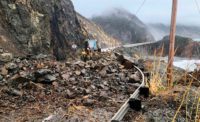ASCE Tackles Climate Change in New Guide for Resilient Structures
Insurance companies, governments and some businesses are looking to engineers to build more-resilient structures to accommodate changing climate and weather extremes. But some engineers may not know how to incorporate into their designs consistently the unknowns of future rainfall and storms.
“Engineers are improvising,” says Bilal Ayyub, a professor of civil engineering at the University of Maryland. “Some owners are asking for ASCE standards that we don’t have yet.”
That should all change early next year when the American Society of Civil Engineers releases a 240-page manual of practice on adaptive design and risk management. That manual, currently under peer review, is expected to provide the foundation for ASCE standards.
Along with his co-authors, Ayyub, lead author and editor of the manual, presented an outline of the manual on Oct. 10 in New Orleans at ASCE’s annual conference. The manual does not present typical thresholds for design but, instead, provides guidance on how to model, analyze and estimate risk, uncertainty and weather extremes. The manual also will explain the practice of adaptive design, wherein structures can be configured to handle present conditions and future climate risks—for example, foundations that are strong enough to build floodwalls higher if sea levels rise.
“It’s a way of thinking that considers the uncertainty and looks for opportunities to put into the design criteria components that can be adapted later,” Robert Fields, environmental engineer at STV and a co-author.
Designing for an uncertain future will require a paradigm shift for engineers. Designs must anticipate projected, often unknown risks, which is “where we all recognize we stub our toe,” says co- author Dan Walker, of the University of Maryland’s Dept. of Civil and Environmental Engineering. Walker later emphasized, “There is no getting around the fact that we need to be able to become more cognizant of future changes.” Construction of a more-resilient future could hinge on standards based on the manual. “Once the standard begins to evolve, then the codes can begin to evolve,” says Walker. Until then, Fields says, “Developers are going to look to code minimum.”








